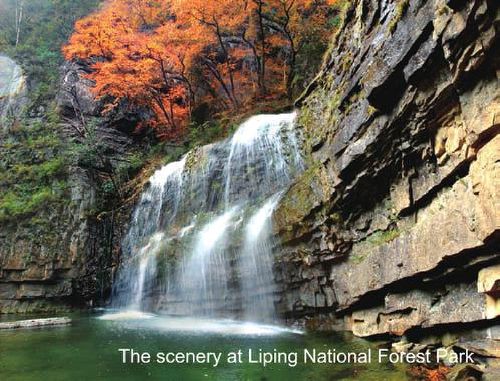
Shaanxi province is carrying out 650 tourist projects, with total investment of more than 80 billion yuan ($12.1 billion), according to the provincial tourism bureau.
Highlights include the construction of tourist facilities including toilets, customer service centers, parking lots and vehicle campsites.
As one of China’s most scenic and historic regions, Shaanxi has over the last few years been accelerating the transformation and upgrade of its local tourism industry, said Yang Zhongwu, director of the bureau.
With its long history and striking culture, the province, which lies at the heart of the Chinese mainland, is considered to be one of the cradles of Chinese civilization.
It is home to seven tourist attractions that have earned the country’s top 5-A rating, including Xi’an Huaqing Hot Springs, the tomb of the Yellow Emperor, Huangdi, the legendary ancestor of the Chinese people who laid the foundations of Chinese civilization, the Famen Temple Buddhist Cultural Area and the museum of the so-called “Eighth Wonder of the World” -the Terracotta Warriors and Horses, which are funeral objects in the tomb of China’s first emperor, Qin Shihuang (259-210 BC).
Other spiritual and natural landmarks include the Yan’an Pagoda, Qinling Mountains and Mount Huashan.
Shaanxi’s capital, Xi’an, was the eastern starting point of the ancient Silk Road that stretched from China to Central Asia and Europe. The city is also one of the four great ancient capitals of China, with many renowned tourist attractions.
The Silk Road is a route that has been recognized as having extreme cultural and historical importance.
The “Routes Network of Chang’an (Xi’an’s ancient name) - Tianshan Corridor”, a 5,000 km stretch of the road running from China to Central Asia, was proclaimed a UNESCO World Heritage site in June 2014.
An important part of the eastern section of the road, the network includes 33 cultural heritage sites in China, Kazakhstan and Kyrgyzstan. There are seven iconic sites in Shaanxi, including Daming and Weiyang palaces, the giant and small wild goose pagodas and the Tomb of Zhang Qian, an influential diplomat in China’s Western Han Dynasty (206 BC-AD 24) and one of the pioneers of the Silk Road.
In 2015, Shaanxi welcomed 386 million domestic and foreign tourists, an increase of 16 percent year-on-year. It generated more than 300 billion yuan in tourism revenue, up 19.2 percent on the previous year.
In recent years, the province has organized a series of international tourist events to showcase its resources and competitiveness to the world.
In June last year, for instance, experts from the countries along the Silk Road Economic Belt route gathered in Xi’an for the Thematic Sessions of the 7th UNWTO International Meeting On Silk Road Tourism. VIP guests included Taleb Rifai, secretary-general of the United Nations World Tourism Organization and tourism ministers from more than 20 countries and regions.
The Xi’an Silk Road International Tourism Expo was also held last year, from Sept 11-13. Some 2,000 agreements worth 30 billion yuan were signed during the event.
This year, the province hosted the Dialogue of Qinling Mountains with the Yellow River in May to promote its image, and will assist the China National Tourism Administration to host the 2016 US-China Tourism year and the South Korean Tourism Year.
“Through those events, we want to tell the world that Shaanxi is preparing to build an international platform to enhance its influence on the tourism industry,” Yang said.
Xi’an is also applying to become a 144-hour visa-free destination to further promote cross-border tourism, he added.
The province, which is long and narrow in its topography, boasts a wealth of unique landforms.
The famous Weihe River winds through the Guanzhong Plain for a distance of 800 meters before passing by Tongguan. It complements perfectly the loess tableland that towers above it.
If one travels to Southern Shaanxi, the sight of the green hills being mirrored in the crystal river might make one feel like e walking through a picture. And if one is in the North of Shaanxi, one must be overwhelmed by its majestic mountains.
The Yellow River, which is said to be the Mother River for local residents, continues to pour out its splendor.
Extending for more than 1,600 kilometers, the Qin Mountain Range starts from Mount Baishi located in Lintan county, Gansu province and then runs eastward into Shaanxi passing to the south of Gansu’s Tianshui city.
It is the only mountain range that runs on a west to east axis in China and it separates northern China from southern China.
Moreover, the range forms the watershed for the Yangtze River and the Yellow River. The northern subtropical areas also begin to merge into the temperate zones here.
It is a key place that helps to preserve the global diversity of animal species and is called the “National Central Park of China” on account of its special geographical position and mysterious biological features.
In 2009, Shaanxi Qinling Geopark was listed as one of the World Geoparks.
